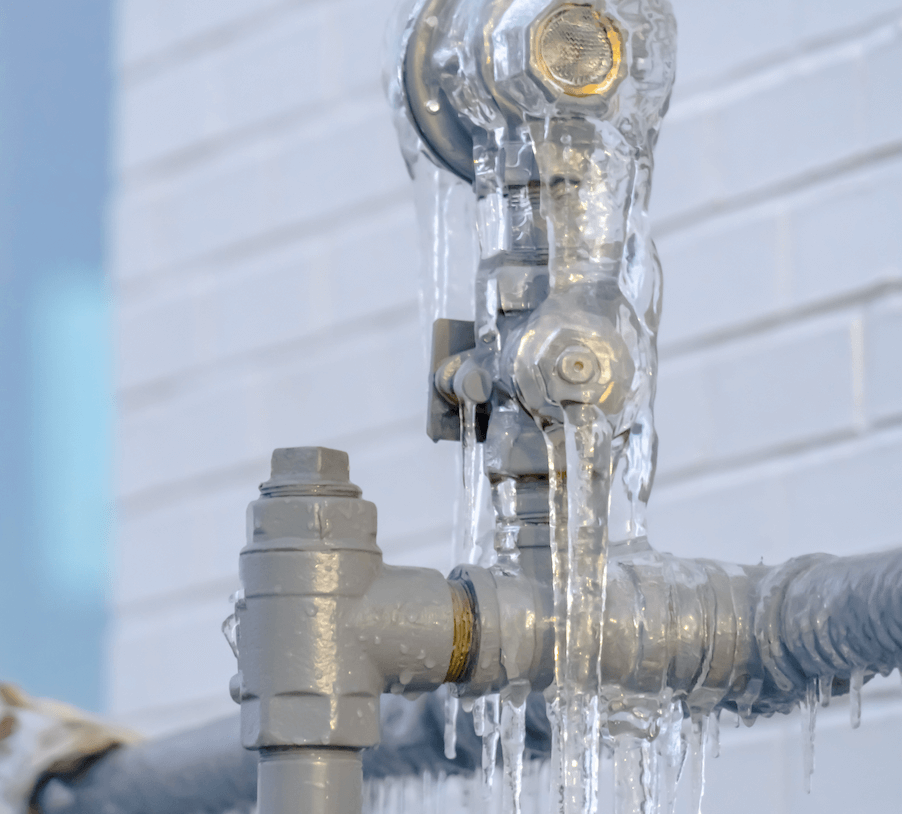Essential Tips for Avoiding Frozen Pipes in Winter Seasons
Essential Tips for Avoiding Frozen Pipes in Winter Seasons
Blog Article
We have stumbled upon this post about Winter Plumbing Precautions: Preventing Frozen Pipes directly below on the internet and felt it made good sense to write about it with you here.

Winter can ruin your plumbing, especially by freezing pipes. Right here's just how to stop it from occurring and what to do if it does.
Intro
As temperature levels drop, the threat of icy pipes boosts, potentially bring about pricey repair services and water damage. Understanding just how to avoid icy pipes is critical for homeowners in cold environments.
Avoidance Tips
Shielding vulnerable pipelines
Cover pipes in insulation sleeves or use warmth tape to safeguard them from freezing temperature levels. Concentrate on pipes in unheated or exterior areas of the home.
Heating techniques
Keep indoor rooms adequately heated, particularly locations with pipes. Open up closet doors to permit cozy air to flow around pipelines under sinks.
How to determine icy pipes
Try to find reduced water flow from taps, uncommon smells or sounds from pipes, and noticeable frost on subjected pipes.
Long-Term Solutions
Architectural modifications
Take into consideration rerouting pipelines away from outside walls or unheated areas. Add additional insulation to attic rooms, cellars, and crawl spaces.
Upgrading insulation
Buy premium insulation for pipes, attic rooms, and wall surfaces. Appropriate insulation assists maintain constant temperature levels and lowers the threat of icy pipes.
Safeguarding Exterior Pipes
Garden hoses and exterior taps
Disconnect and drain pipes garden hose pipes prior to winter months. Set up frost-proof spigots or cover outdoor faucets with shielded caps.
Understanding Frozen Pipes
What creates pipelines to ice up?
Pipelines ice up when subjected to temperatures listed below 32 ° F (0 ° C) for prolonged periods. As water inside the pipes freezes, it increases, taxing the pipeline walls and potentially creating them to rupture.
Threats and damages
Frozen pipelines can bring about water system disruptions, building damage, and costly repair work. Ruptured pipelines can flooding homes and trigger substantial structural damages.
Indicators of Frozen Water Lines
Determining frozen pipelines early can prevent them from rupturing.
What to Do If Your Pipelines Freeze
Immediate activities to take
If you presume frozen pipes, keep faucets open up to ease pressure as the ice thaws. Make use of a hairdryer or towels soaked in warm water to thaw pipes gradually.
Final thought
Protecting against frozen pipes requires positive actions and quick feedbacks. By understanding the causes, signs, and safety nets, homeowners can safeguard their plumbing throughout cold weather.
6 Proven Ways to Prevent Frozen Pipes and Protect Your Home
Disconnect and Drain Garden Hoses
Before winter arrives, start by disconnecting your garden hoses and draining any remaining water. Close the shut-off valves that supply outdoor hose bibs and leave the outdoor faucet open to allow any residual water to drain. For extra protection, consider using faucet covers throughout the colder months. It’s also important to drain water from any sprinkler supply lines following the manufacturer’s directions.
Insulate Exposed Pipes
Insulating your pipes is an effective way to prevent freezing. Pipe insulation is readily available at home improvement stores and is relatively inexpensive. Pay close attention to pipes in unheated areas such as the attic, basement, crawl spaces, or garage. Apply foam insulation generously to create a buffer against the cold. You can also wrap your pipes in heat tape or thermostat-controlled heat cables for added warmth.
Seal Air Leaks
Inspect your home for any cracks or openings that could let in cold air. Seal any holes around the piping in interior or exterior walls, as well as the sill plates where your home rests on its foundation. Additionally, make sure to keep your garage door closed unless you’re entering or exiting. Leaving it open creates a significant air leak that can lead to frozen pipes.
Allow Warm Air Circulation
During cold snaps, it’s essential to allow warm air to circulate evenly throughout your home. Leave interior doors ajar to promote better airflow. Open kitchen and bathroom cabinets to help distribute heat consistently around the rooms. If you have small children or pets, be sure to remove any household chemicals or potentially harmful cleaners from open cabinets for safety.
Let Faucets Drip
A small trickle of water can make a big difference in preventing ice formation inside your pipes. When temperatures drop significantly, start a drip of water from all faucets served by exposed pipes. This continuous flow helps prevent the water from freezing. Additionally, running a few faucets slightly can relieve pressure inside the pipes, reducing the chances of a rupture if the water inside does freeze.
https://choateshvac.com/6-proven-ways-to-prevent-frozen-pipes-and-protect-your-home/

We were introduced to that article on How To Avoid Freezing Pipes from a good friend on our other web blog. Sharing is good. Helping others is fun. Thanks a lot for your time. Return soon.
Call Today Report this page